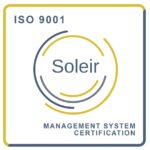As motor repair and manufacturing professionals, ensuring the reliability and performance of electrical equipment is paramount. Surge testing, in accordance with IEEE 522 standards, is a critical process in assessing the insulation integrity of motors and generators. By following these standardized procedures, technicians can identify potential issues early on, preventing costly downtime and failures. Let’s delve into the key steps involved in performing surge testing per IEEE 522 standards.
Understanding Surge Testing
Surge testing, also known as impulse testing, involves applying high-voltage pulses to the windings of a motor to assess the condition of the insulation system. This test helps detect weaknesses such as insulation breakdown, turn-to-turn faults, and winding contamination. IEEE 522 provides guidelines for surge testing, ensuring consistency and accuracy across different testing environments.
Equipment Preparation
Prior to conducting surge testing, it is crucial to prepare the equipment properly. Ensure that the surge tester is calibrated and functioning correctly. Verify that all connections are secure and that the test leads are in good condition. Additionally, make sure to follow proper safety procedures, including wearing appropriate personal protective equipment.
Test Setup
When setting up for surge testing, connect the surge tester to the motor windings according to the manufacturer’s instructions. Typically, surge testers come with different test leads for various motor configurations. Select the appropriate lead configuration based on the motor’s design. Verify that the test settings, including voltage levels and pulse durations, are set in accordance with IEEE 522 standards.
Performing the Test
Once the setup is complete, initiate the surge test. The tester will apply high-voltage pulses to the motor windings, simulating voltage spikes that the motor may experience during operation. Observe the test results for any abnormalities, such as excessive leakage current or voltage breakdown. Record the test data for analysis and comparison against IEEE 522 limits.
Interpreting Results
After conducting the surge test, carefully analyze the results to determine the insulation condition of the motor. Compare the measured values against the IEEE 522 standard limits to assess whether the insulation is within acceptable parameters. Any deviations from the standard thresholds may indicate potential issues that require further investigation or corrective action.
Conclusion
Surge testing, as per IEEE 522 standards, plays a crucial role in evaluating the insulation integrity of motors and generators. By following standardized procedures and guidelines, technicians can effectively identify insulation weaknesses and prevent catastrophic failures. Adhering to these testing protocols is essential for maintaining the reliability and longevity of electrical equipment.
For professional motor repair and surge testing services, contact The Pump & Motor Works, Inc. Our experienced technicians are equipped to handle all your motor testing and repair needs. Contact us today for expert assistance.



